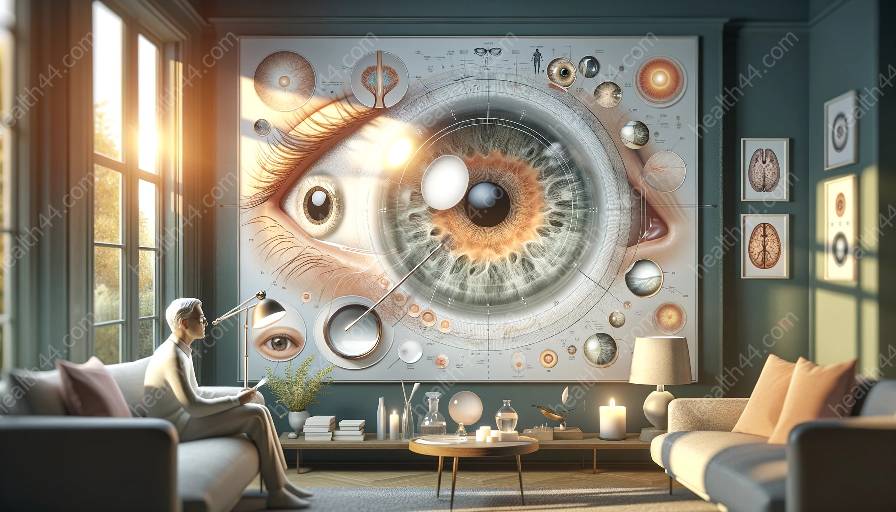Introduction
The development of lens technology for vision care has been greatly influenced by our understanding of the anatomy of the eye. An in-depth exploration of the anatomical contributions to advancements in lens technology sheds light on the remarkable progress made in providing improved vision solutions to individuals with various eye conditions.
Anatomy of the Eye: Key Considerations for Lens Technology
The eye is a complex organ with a sophisticated anatomical structure that plays a crucial role in vision. The main components of the eye include the cornea, iris, lens, retina, and optic nerve. Each of these structures has distinct anatomical features that must be carefully considered in the development of effective lens technology for vision care.
Cornea
The cornea, the transparent outer layer of the eye, is responsible for refracting light and focusing it onto the lens. Its curved shape and refractive properties are essential considerations for the design of corrective lenses, such as contact lenses and eyeglasses.
Iris and Pupil
The iris and pupil regulate the amount of light entering the eye. Lens technology must account for the dynamic changes in pupil size under different lighting conditions to optimize visual acuity and comfort for the wearer.
Lens
The lens, situated behind the iris, is a crucial focus of advancements in lens technology. Cataracts, a common age-related condition affecting the lens, have catalyzed innovations in intraocular lenses and surgical techniques for restoring clear vision.
Retina and Optic Nerve
The retina, a light-sensitive layer at the back of the eye, and the optic nerve, which transmits visual signals to the brain, are central to the process of vision. Understanding their anatomical functions has paved the way for advancements in ocular imaging technology and the development of lenses for conditions such as macular degeneration and diabetic retinopathy.
Impact of Anatomical Understanding on Lens Technology
The intricate anatomical features of the eye have been instrumental in driving advancements in lens technology for vision care. Innovations such as multifocal lenses, toric lenses for astigmatism, and photochromic lenses have been influenced by a deep understanding of the eye’s anatomy and visual needs.
Advancements in Contact Lens Technology
Contact lenses, which directly interact with the ocular surface, have benefited from detailed knowledge of ocular anatomy. The development of breathable materials, precision fitting techniques, and innovations in surface treatments has been guided by the anatomical considerations of the cornea and conjunctiva.
Customized Lens Solutions
Advancements in imaging technology and the ability to map the corneal and ocular surface have led to the customization of lenses for individual patients. This personalized approach, made possible by anatomical insights, has resulted in enhanced visual outcomes for individuals with irregular corneas, post-surgical complications, and other complex visual needs.
Future Directions in Lens Technology
As our understanding of the intricate anatomical contributions to vision care deepens, the future of lens technology looks promising. Research into advanced materials, bio-integrated lenses, and neuro-optical interfaces is poised to revolutionize the field, with the anatomy of the eye serving as a guiding framework for innovation.
Conclusion
The symbiotic relationship between the anatomy of the eye and advancements in lens technology for vision care underscores the interdisciplinary nature of progress in ophthalmic care. By recognizing the anatomical intricacies of the eye and integrating them into lens design and technology, we continue to improve visual outcomes and enhance the quality of life for individuals with various visual impairments.








